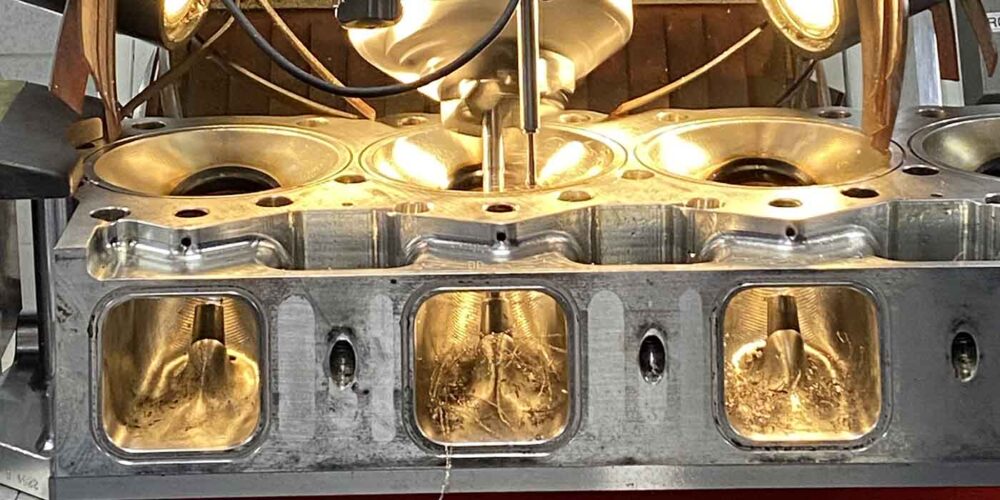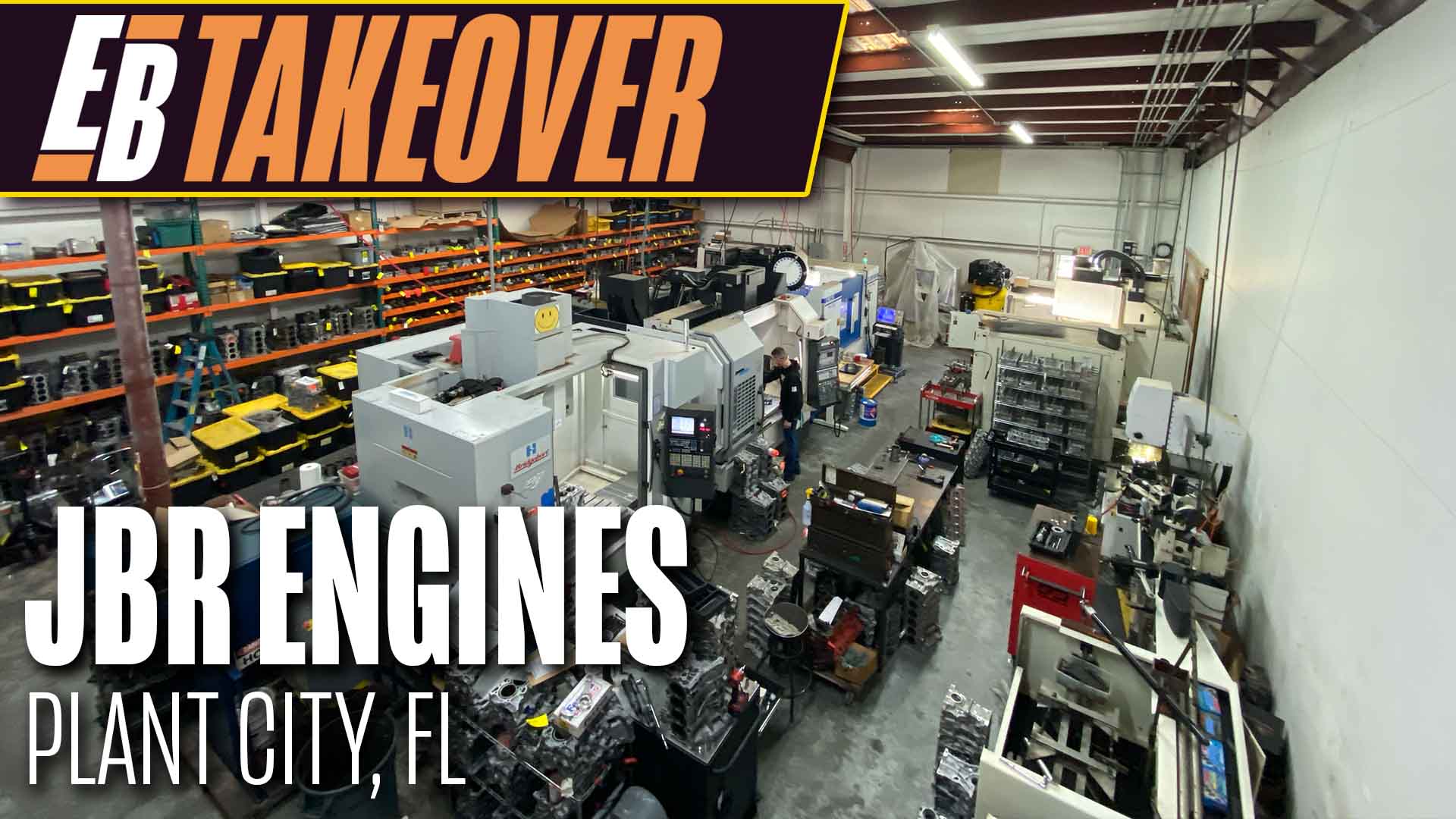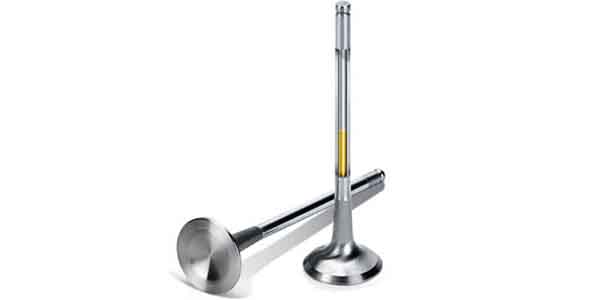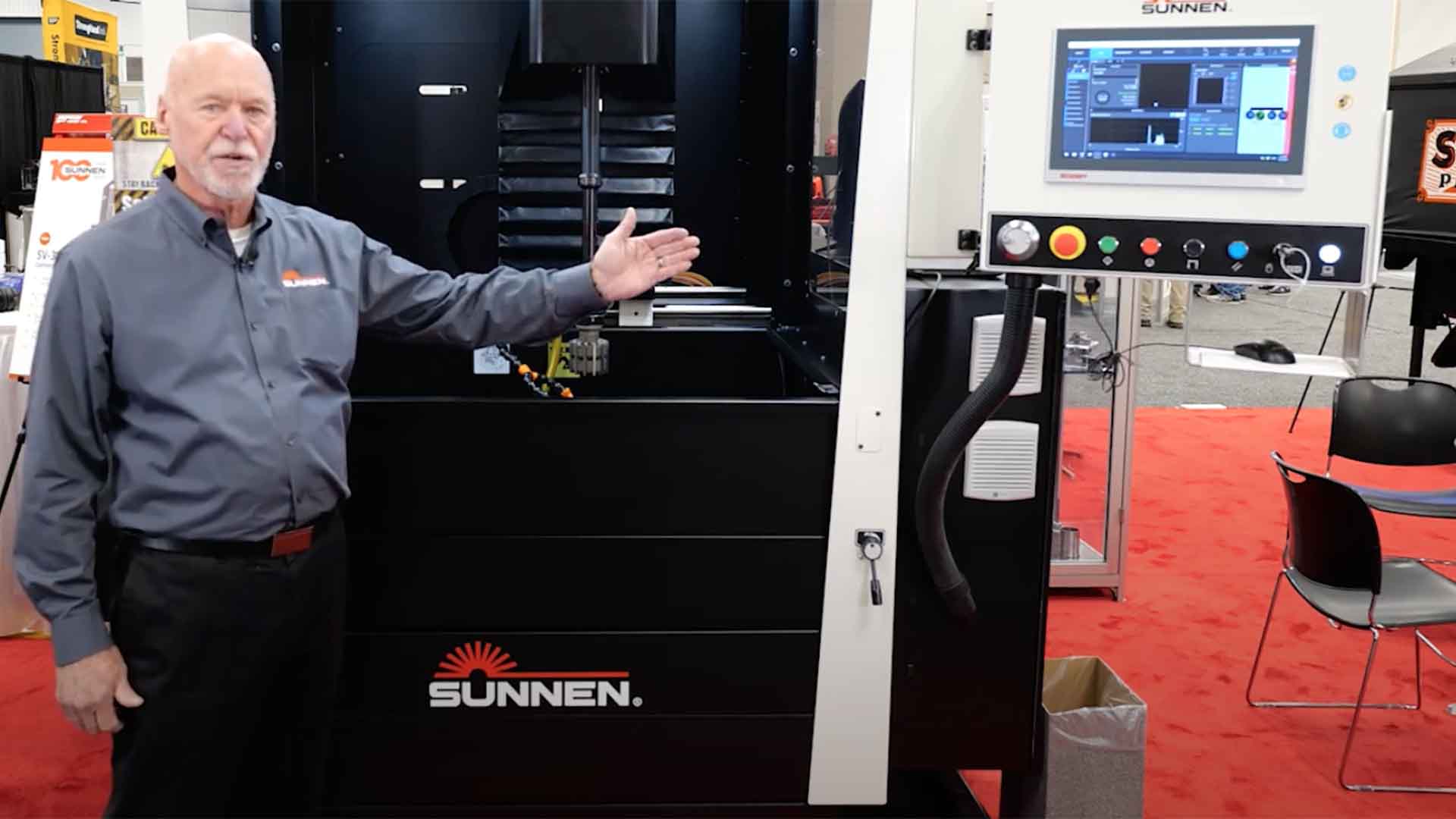When it comes to cylinder head performance, a lot of attention gets paid toward airflow, cfm and the ports, and rightfully so. Those are all important factors of a well-performing cylinder head. However, another aspect to make sure you don’t ignore is the valve job. The valve job ensures the mating surfaces of the valves and the seats properly control the air/fuel mixture entering and leaving the cylinder head exactly how you want it to. Is that reason enough to make sure you’re doing a better valve job? We think so.
When cutting a valve job, you have to look at both the intake and exhaust side of things. Just as you shouldn’t get too hung up on cfm numbers, the same can be said about the flow bench for the valve job.
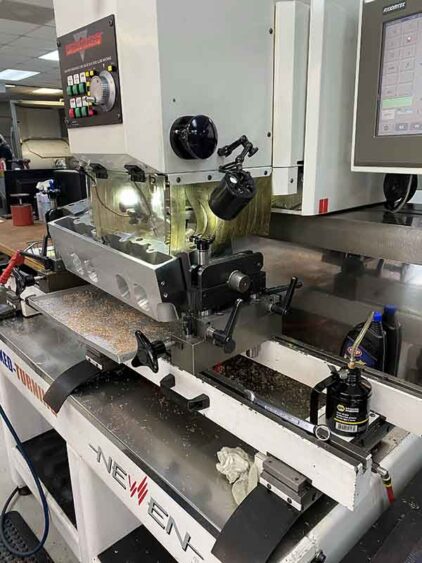
“The bench will lead you astray,” warns Matt Bieneman, owner of MBE Cylinder Heads & Manifolds. “It’s still a tool, but we don’t want it to lead you astray. The first thing we’re looking at is valve lift on the intake side. How much valve lift is it going to have? We want to know that because we want to take advantage of the seat angle.”
When you know the lift and the seat angle, that will dictate what the bottom angles are going to be. It does not dictate what the top angles are going to be. The top angle is going to be dictated by the chamber, as well as by valve angle and valve placement.
“We change those angles with the objective of trying to keep the air attached as long as possible,” Bieneman says. “If you can keep it attached longer, it’ll flow more air. The later that air doesn’t go turbulent, the better off you are.”
An example is something with say .500 lift on the intake side. For that, you’d use a 45-degree seat angle. If you were to use a 50 or 55-degree seat angle, it could be “lazy.”
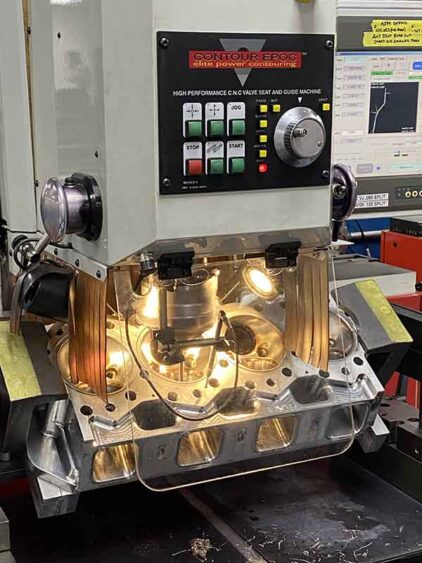
“I don’t think it’s going to be good on restarts and things like that,” he says. “Those are things that matter for dirt engines and some street stuff. As we get more and more lift, we go to steeper seat angles. As we go to more and more lift, we can also take advantage of making the throat larger. That’s part of what going into the steeper seat angle does. If you go to a steeper seat angle, then automatically it makes those bottom angles steeper also, so it allows you to get the throat larger.
“What you’re trying to do is fool the engine into thinking it has as much valve area as possible within the parameters you have to be in. What happens when you do it on a 23-degree head and you go to a 55-degree seat angle on the intake side at .500 lift, it’ll lose all its mid-lift numbers – it’ll just kill it. You can’t have that happen. The air is not going to stay attached, so it’s too much of a sacrifice. That’s why you would leave it flatter.”
Moving to the exhaust side, it’s strictly about the throat size. It’s not about the bench. That said, you want to get it correct on the bench, but you can make something that flows 25 cfm less and it makes 30 more horsepower.
“We’ve done that before,” Bieneman says. “We always stay within the rules, but we do different things to make the engine think the throat is larger. We want angles on the valve job. We want those angles to be sharp on the intake side, and we are about putting radiuses on the exhaust side. We would never blend the angles out of the valve job. We have too much data from working with Cup teams and Pro Stock stuff to know that doesn’t work.”
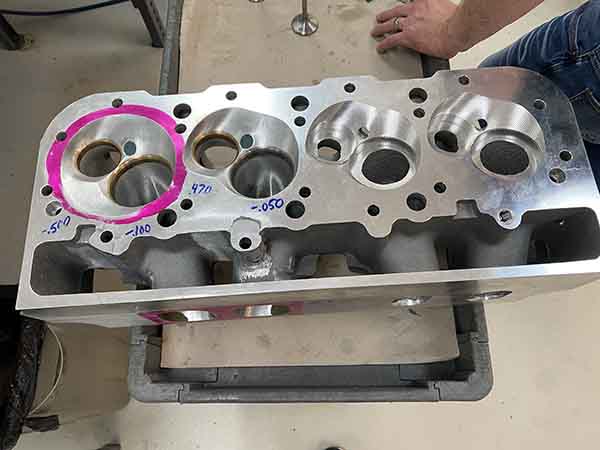
Not only do you want those angles, but the length of those angles are also important.
“The length of those valve job angles are very important because the air has to stay attached, and rpm dictates a lot of what the width of those angles are going to be,” he says. “As rpm goes up, typically the width of the angles needs to be wider to keep air attached. The bottom angles are certainly real important. Fortunately for us, we have the Newen EPOC, so we know what the valve job is going to do before we cut it because when you have that machine you can just hit a button on the screen and it tells you to the thousandths what it’s going to cut, so we’re not guessing. We can get the throat to the thousandth before we even cut the valve job. It’s a huge advantage to a place like this. I understand not everybody can afford an EPOC, but for a place like us, that’s the only thing we valve job on. It’s just so much more accurate.”
In addition to the degree and width of a seat angle, you also have options in terms of how many angles get cut during a valve job. Popular options are a 3, 4 or 5-angle valve job. Sometimes this is an option, and other times, the number of angles is decided for you.
“If you can picture putting three or four bottom angles on a valve job compared to just putting one long one, what happens is as the air comes in, it’ll actually speed the air up,” he says. “What you want it to do is make sure it stays attached. Well, you’ll have much better luck keeping everything attached if you go in 7 or 10-degree increments on those various angles. If you look at a lot of aerospace stuff, 7 degrees is a magic number for them and there’s reasons for that.
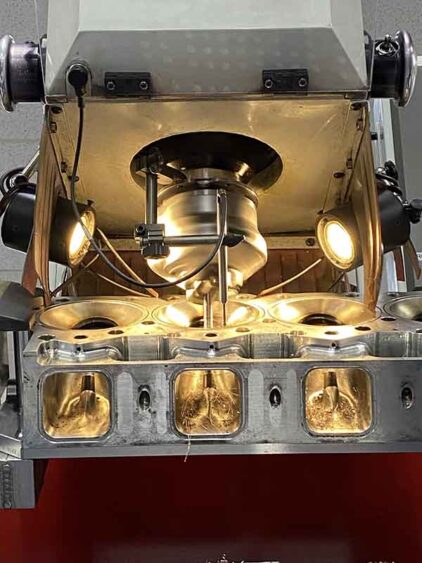
“For a valve job and the angles involved, if you can always do at least four, I think you’re better off. However, what happens is sometimes you’ll have a set of heads and the throat is too big, so you can only get three angles on them. You just can’t get those bottom angles, so you typically can’t pick up the mid-lift numbers that the customer was hoping to do. To do that, we would’ve had to put seats in it and make the throat smaller, so we could get all that in there.
“When you can get those angles, I’d definitely suggest it. We have stuff that is five angle and we have stuff that is four angle, and some of the four angle stuff is better than the five, but it’s just constantly trying things.”
While much of engine building requires trial and error, Bieneman stresses that one of the most important aspects of a valve job is maintaining concentricity.
“Concentricity is the most important thing and people really take that for granted,” Bieneman says. “For one, the valve job is going to stand it a lot longer. If it’s concentric, it will make more power. It’s the most important thing. Part of it is just sticking to the basics and the basics are making sure things are concentric.”
Matt stresses this point because for a lot of people, when it comes to the throat of the valve job, it won’t be concentric in the throat. They’ll pull material out of one side of the valve job and then make it concentric everywhere else. MBE does suggest that at all.
“We feel that is the absolute wrong thing to do,” Bieneman admits. “When we do valve jobs, everything is concentric all the way down. We think there’s a lot of value to that. We see this stuff come in and I think they’re either fooling themselves or thinking too much. They’re making it harder than what it is.”
When doing your next valve job, make sure you aren’t solely relying on the flow bench; you’re cutting at least four angles within 7-10 degrees of one another; and the width of those cuts match how much air you’ll need for the rpm of the engine; and lastly, that the steepness of your angles matches how much lift the engine has. You follow those guidelines, you’ll be good to go.

